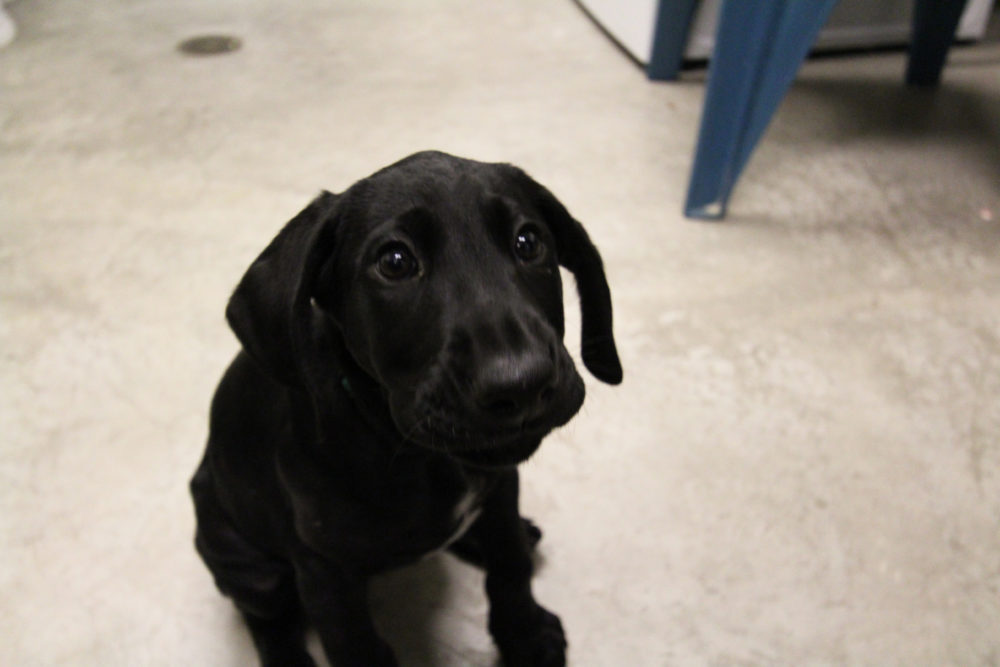by SPP Co-Director Kelli Bush
Historically, bighorn sheep were widespread in western North America. By the turn of the 20th century, populations had dwindled to near extinction, and recovery efforts were needed to bring them back from the brink. Today, the biggest threat to bighorn sheep is pneumonia triggered by a bacteria called Mycoplasma ovipneumoniae, or M. ovi for short. The bacteria is commonly carried by domestic sheep and goats. While the pathogen usually leads to only mild sickness or lower rate of weight gain in domestic animals, it can be lethal to wild bighorn sheep. Raising M. ovi-free domestic sheep can protect wild bighorn sheep from the devastating pathogen.

Wild bighorn sheep photo credit: Washington Department of Fish and Wildlife staff
In 2015, Dr. Richard Harris with the Washington State Department of Fish and Wildlife (WDFW) introduced the idea of a pilot program to breed M. ovi-free domestic sheep to Sustainability in Prisons Project (SPP) leadership. SPP coordinates other conservation programs rearing endangered Taylor’s checkerspot butterflies, caring for western pond turtles, and propagating native plants. Dr. Harris suggested adding the pilot program to benefit wild bighorn sheep recovery, while also offering incarcerated program participants education and training.
Areas where private domestic and wild bighorn sheep herds are at risk of contact have been identified. Owners of these domestic herds are the most important market for M. ovi-free sheep. Currently, there are no private domestic sheep breeders that specialize in raising M. ovi-free animals. The prison program aims to develop protocols to share with sheep breeders who want to join the effort.

Sheep arrive at Washington State Penitentiary photo credit: WSP staff
In the fall of 2017, 16 Suffolk sheep—15 ewes and one ram—arrived at their tidy, new home in Washington State Penitentiary (WSP). Sheep husbandry tasks include the day-to-day care of the sheep. Under the care of incarcerated people, and with the support of animal husbandry experts, corrections staff and veterinarians, the small flock has thrived. Program partners include WDFW, SPP partners at Washington State Department of Corrections and the Evergreen State College, and local sheep husbandry experts. Washington State University provides critical contributions in the form of pathogen testing and program guidance.
The recent arrival of spring brought the program’s first lambs. So far, the program has welcomed 20 new babies. With the guidance of sheep husbandry experts, Jerry Kjack and Gerry Glenn, incarcerated program participants conduct a health check just after lambs are born. The health checks are done to ensure lambs are properly nursing and to clean the umbilical cord area. In rare cases, a lamb requires extra care, including tube or bottle feeding. One ewe and her lambs needed extra care and were transported inside the secure perimeter of the prison to receive extra support from program technicians. Each mother produces twins and a few more are expected before the spring is over.

Lamb twins, just born photo credit: WSP staff

New baby photo credit: WSP staff

Ewe being transported to inside the secure perimeter of the prison to receive extra care after lambing photo credit: WSP staff
Incarcerated program participants caring for the sheep receive education and training on sheep husbandry, bighorn sheep ecology, wildlife management, and related vocational and educational opportunities. Investing in education and vocational training for incarcerated people can improve community safety and reduce recidivism. Additionally, meaningful work and activities maintain facility safety by reducing idleness. The program provides everyone involved with satisfying opportunities to contribute to wildlife conservation.

Program participants leaving the sheep program site photo credit: Kelli Bush SPP




















 CRCC during the summer. The picture is looking at some of the units and the courtyard with a rock garden in the center. The gardens at CRCC all feature native plants and rock designs. Photo by Ricky Osborne.
CRCC during the summer. The picture is looking at some of the units and the courtyard with a rock garden in the center. The gardens at CRCC all feature native plants and rock designs. Photo by Ricky Osborne.











